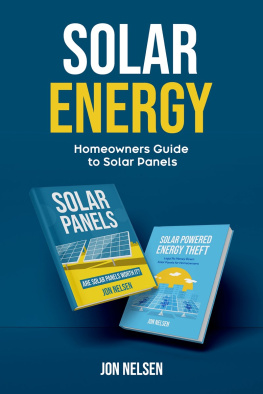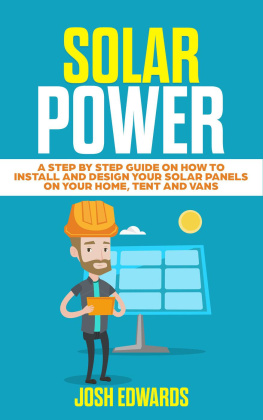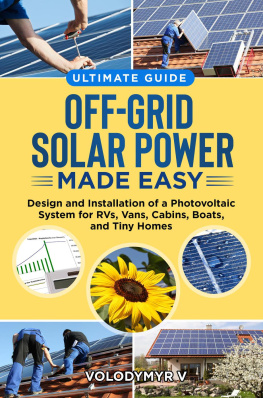Travis Newman - Solar Power: The beginner’s guide on how to design and install a photovoltaic system for your home, cars, vans and boats
Here you can read online Travis Newman - Solar Power: The beginner’s guide on how to design and install a photovoltaic system for your home, cars, vans and boats full text of the book (entire story) in english for free. Download pdf and epub, get meaning, cover and reviews about this ebook. year: 2019, genre: Romance novel. Description of the work, (preface) as well as reviews are available. Best literature library LitArk.com created for fans of good reading and offers a wide selection of genres:
Romance novel
Science fiction
Adventure
Detective
Science
History
Home and family
Prose
Art
Politics
Computer
Non-fiction
Religion
Business
Children
Humor
Choose a favorite category and find really read worthwhile books. Enjoy immersion in the world of imagination, feel the emotions of the characters or learn something new for yourself, make an fascinating discovery.
- Book:Solar Power: The beginner’s guide on how to design and install a photovoltaic system for your home, cars, vans and boats
- Author:
- Genre:
- Year:2019
- Rating:4 / 5
- Favourites:Add to favourites
- Your mark:
Solar Power: The beginner’s guide on how to design and install a photovoltaic system for your home, cars, vans and boats: summary, description and annotation
We offer to read an annotation, description, summary or preface (depends on what the author of the book "Solar Power: The beginner’s guide on how to design and install a photovoltaic system for your home, cars, vans and boats" wrote himself). If you haven't found the necessary information about the book — write in the comments, we will try to find it.
Scientists around the world agree that our civilization will soon reach the point of no return. We are not using our planets resources responsibly, we pollute extensively, and we are not implementing smart infrastructural solutions.
One of the many options we have to save our planet, and our way of life is to tap into the massive energy source - solar power. We are still not utilizing it enough. According to research, most of the worlds required energy could be supplied by solar power.
There are numerous benefits to using this renewable energy source. It saves money in the long run; it cant be spent no matter how much of it is being used, and its good for the environment.
If youre wondering how to start using solar power in your company or home, this book will guide you through everything you need to know.
Heres what you get:Detailed information on how solar power works
How to power your heating and cooling systems with solar energy
- Guide on how you can transform solar energy to electricity
- How solar power can revolutionize our ways of transport
- Detailed guide on solar energy generators and collectors
- And much more!
There are many ways of using solar power. The best part is that they work on any scale, whether youre an individual whos looking to make your home environment-friendly, or if youre the company owner who wants to reduce the COemission.
Investing in solar energy is considered a sound choice since it will reduce your monthly energy bill so youll be saving money in the long run. Think about how much money youd be able to save if you didnt have to pay your heating, gas, and electricity bills.
Also, solar panels usually come with a 25-year warranty, so youll have no additional costs once you install them, even in the improbable case of malfunction.
Do you want to make your home or company environment-friendly, and cost-efficient?
Travis Newman: author's other books
Who wrote Solar Power: The beginner’s guide on how to design and install a photovoltaic system for your home, cars, vans and boats? Find out the surname, the name of the author of the book and a list of all author's works by series.






